The Coleman lantern above my head is swinging from the ridge pole. Colton just hit his head on it, again. I can relate; I’ve hit it countess times despite the fact that we all know it’s there. It is hung judiciously right above the camp stove and folding tables and you are bound to hit it more than once.
I’m sitting in the shade of the cook shack tent while writing this as the breeze rustles the canvas above me; it’s midafternoon on Wednesday of this week. It’s Caryl’s birthday today; I’m sadly missing it, but we were short a crew boss, so it’s my time to stand in and ride.
But it’s all good. Throughout the summer, I’ll drift in and out of cow camp, working with all of the crew members, passing on lessons that we’ve learned on the range and developing new ideas together. My personal gear and bedroll is always up there, and stays with the camp. I am the boss, and when there is over a million dollars in beeves up there on that mountain, I need to be part and parcel with that crew through it all.
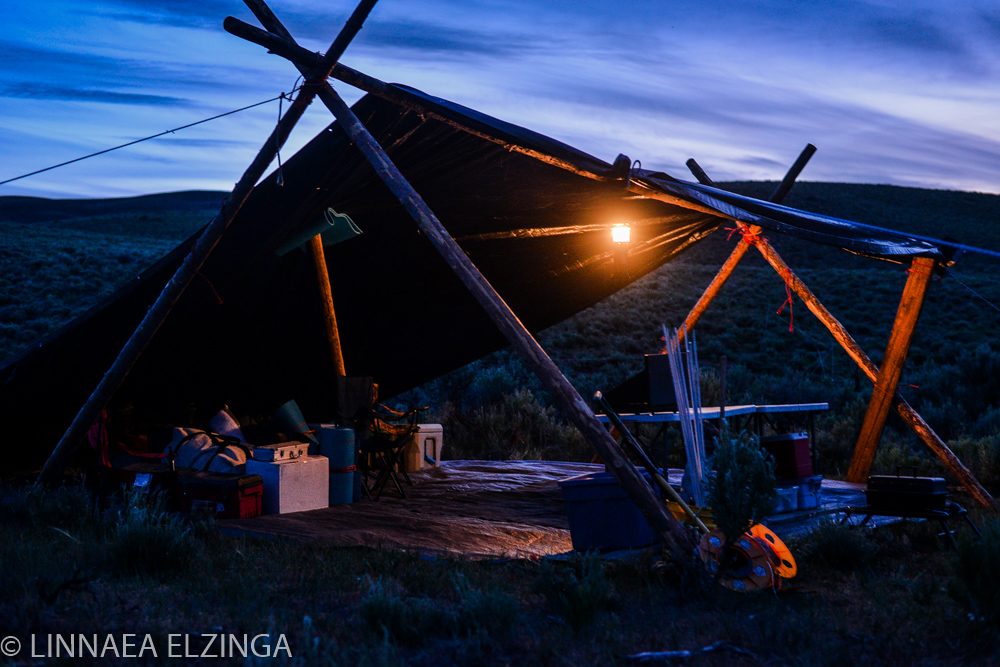
Besides, when I am in camp, it is like a vacation up there—away from email and cellphones. Sure the days are physically demanding—so much that I think few people (even young ones) could put up with the rigors of it without cracking; it’s why we try to get many applicants for these positions, so we can find the tenacity we need. The right people will enjoy the long days, while understanding that they are creating exceptional protein in an elegantly sustainable dance where bovines packing their fermentation chambers digest the symbiosis between high mountain summer sunshine and volcanic soils.
Today I have with me Colton, Sam and Rebecca. We just brought the beeves into water off the range; the cows are happily resting their legs and laying down in the cool afternoon winds that pulse across the ranges. Their bellies are swollen with fill; they’ve been quite busy eating all morning.
It is now time to chew cud.
We had ridden into camp 20 minutes ago. After settling the beeves down at our spring fed water tank (it holds 1500 gallons—just enough for 350 head of thirsty beeves), it’s the horses that are next: We busy ourselves pulling gear and checking out sweaty backs for hot spots, and turn them out to graze and take a breather for an hour. As always, we humans are low end on the priority list, but no less important. We grab something to graze on as well from our saddlebags and a siesta if so inclined in the open shade of the shack.
I, for one, am so inclined for that siesta, and find that a 5 minute nap comes easy to my 57 year old bag of bones.
This is the third camp on this year’s grazing tour; we call it Bear Basin for the broad rolling parcel of the Sagebrush Ocean we occupy. I try to picture a bear in the wide open spaces; I can certainly fathom a grizzly here, but black bears seem to like the forested parts of our range country. Perhaps it was a griz that early range riders had to contend with. In nearby aspen forests, just beyond the rim of the basin, huge spreads of claw-marks mar the white bark of the largest aspen trees. Those marks—like the mark of a king–stand as a testament to the big pawed bears that once roamed the country 150 years ago.
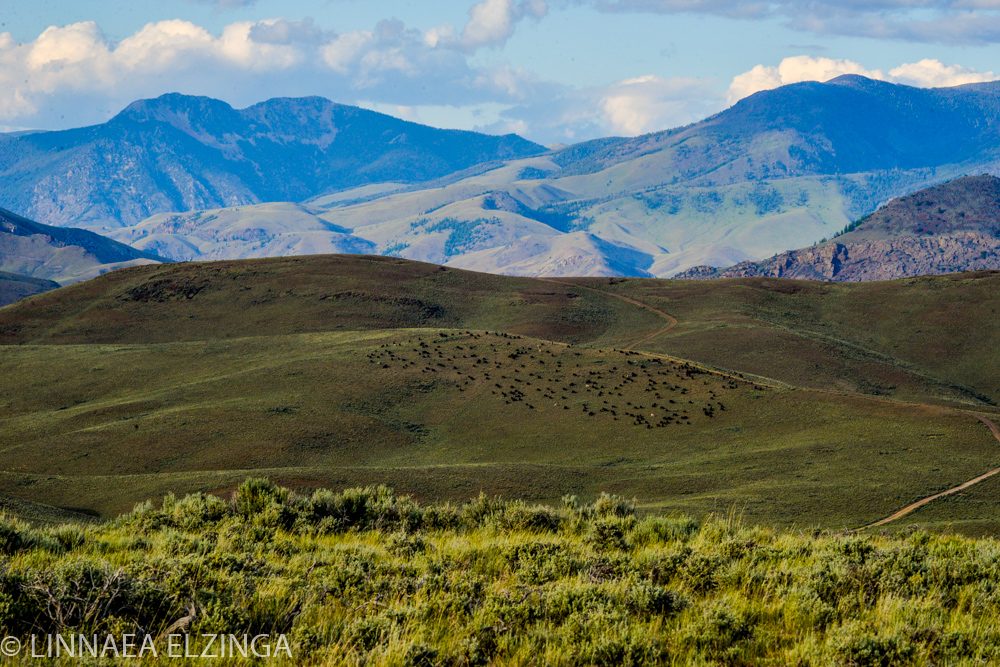
Today, the basin contains some of the highest pure strands of uninterrupted grass and sage we will ride in; since we’re now high above the Salmon River (nearly 2000 feet), the vegetation will soon yield to pine and aspen forest. From horseback, I marvel at the diversity of plants that the cattle graze. There is far more than grass here to be had; there are literally hundreds of forbs they sample and then make mainstays in their highly varied diets.
The human crew is coming along nicely on their quick study to be shepherds of the high ranges. All of them were new to this thing we call inherding, our practice of intensively herding our 350 head of beeves exactly where we want them to the best grass while enhancing the ecological wellness of the wild landscapes that we graze on.
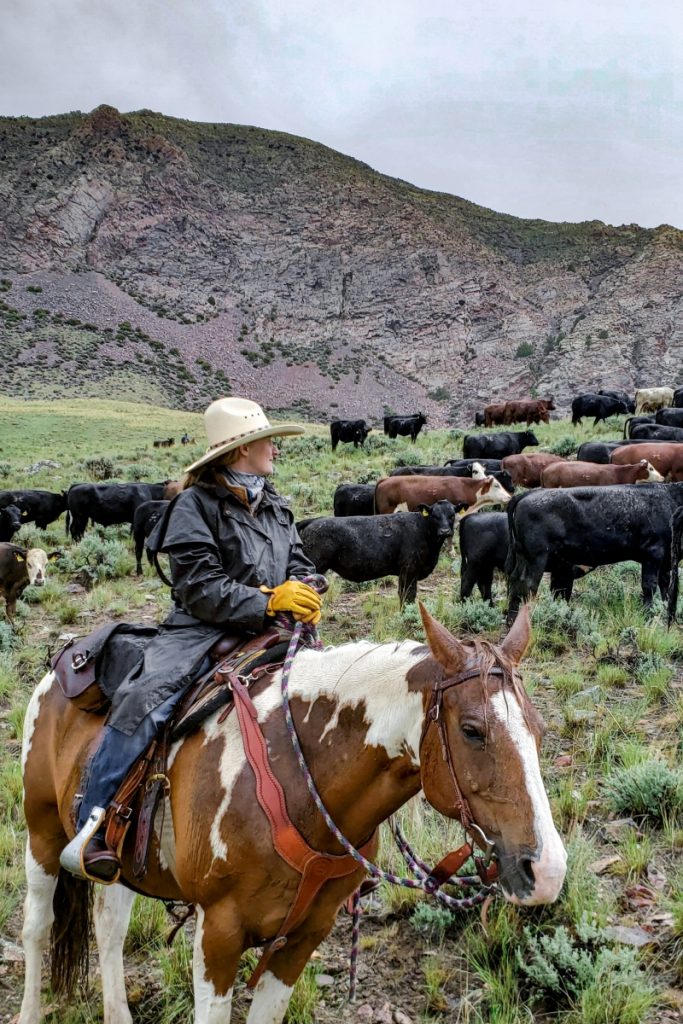
They are getting used to—hardened—to those long days in the saddle, and all are becoming quite proficient at handling their equine charges. They are developing expertise in horse care as had people for thousands of years before them; there’s no technological solution for keeping friction from cutting open a horse’s back and belly; there is only the literal application of tender loving care through the practiced placement of saddle, blankets and cinches.
These young adults have embraced that their equine charges are partners, and necessary to complete their tasks. They all watched as Ginger, the buckskin mare had an arthritis flare up, and Nate from Ohio was cast afoot for the rest of his stint. To his credit, Nate kept up with the crew and his duties as a herdsman but was exhausted after running on foot alongside 350 head of yearling cattle in top physical condition.
He was happy to be horseback again when we transitioned Ginger off the horse crew to recuperate and brought another two horses up to cow camp.
We always keep 8 horses in camp at any one time. That way, each rider has available a fresh horse for their next day’s journey. The cattle will only walk at most 10 miles each day. But for every 1 mile a steer journeys, a horse will often have to cover two miles to herd them. It’s because when there are 350 head scattered over a mountainside serrated by ridges and ravines, herders are continuously correcting positions of individuals to maintain the direction and flow of the herd and our intended grazing journey for the day.
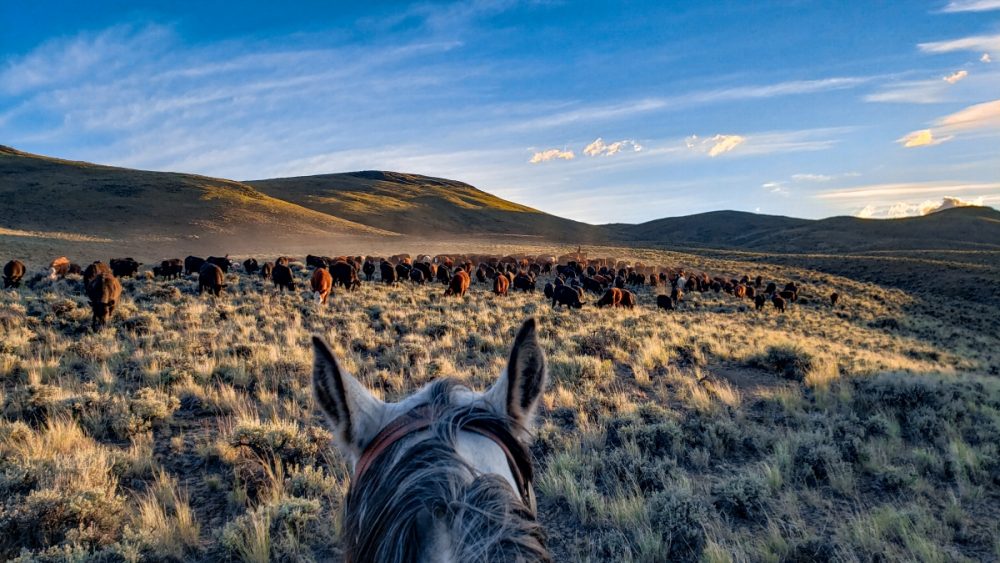
There are always distractions for the cattle that make them forget their allegiance to the herd. Today, it was a coyote. The tawny canine would stay just ahead of the herd leaders, taunting them to follow. And they would. The coyote became magnet for the curious, and pulled the herd across the hills, stretching the entire bunch over a quarter mile.
I finally had to intervene and galloped up to him on my mare, Ruby, to run him off. He hopped away, kangaroo-like, as unthreatened coyotes often do. He came back in a minute for more of the game—and when I got up there to the front of the herd and stood my ground, he quit us. Game over.
As I stood on the ridge and watched him dart among the unending sage into the next canyon, I rubbed the neck of the mare, Ruby. She had been doing well today. Just the day before, she started bucking in obstinacy to my asking her to move out away from the horse herd. Each day on her back brings a little more responsiveness and mutual respect. Daughter Abby has asked me to keep rides on Ruby this summer. Ruby is her mare, and Abby hasn’t been riding because of my two adorable granddaughters, a two-year-old and a crawler. In a few years, they can ride too.
The problem with Ruby’s mind, I think, is that she has the same mentality that some high school cheerleaders have. You know who I’m talking about. Blonde, beautiful, narcissistic. And people serve them. They give them anything they ask for.
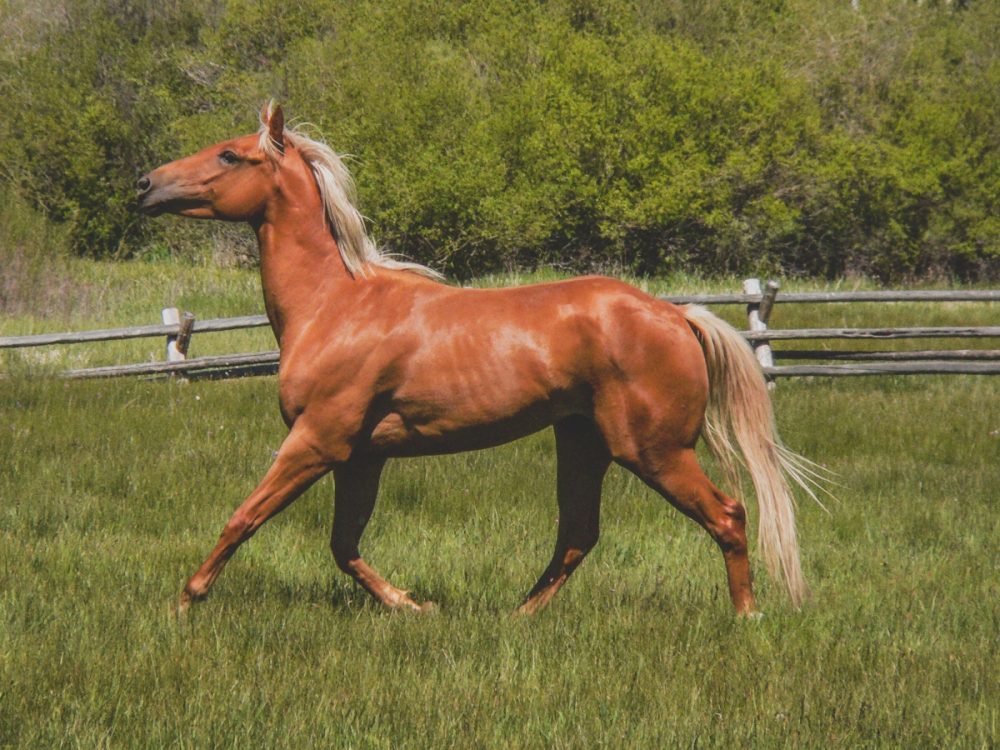
And so they get used to it, some, never quite getting over it. Ruby has the same problem. She is a red palomino with a striking blonde mane. She’s beautiful, and she knows it. I remember the day the girls and I responded to a Craigslist ad and bought her as a filly from a young woman in the Bitteroot Valley of Montana.
We pulled up to her suburban Hamilton, Montana ranch-style house. It was a new house, and the landscaping was still filling the void in the fresh building zone. We knocked on the door, and a beautiful, well-coiffed, blonde-haired young woman opened the door, and welcomed us in (she could have easily been a former cheerleader—I was picturing it). She led us through the immaculate house to the backyard, to where she said her filly was. As we stepped out into the backyard, Melanie, Abby and I stood agape for a few seconds.
The little filly that came happily trotting up looked just like her owner.
They obviously loved each other; soulmates they were. The filly sniffed the young woman’s hands and pockets, looking for the treat that usually defined their relationship. And she received one.
So as we loaded the young, beautiful filly into our stock trailer, there were tears shed. Ruby had really no idea how different her life would be. She would have to learn about the respect of personal space and boundaries, especially from the 20 other Alderspring Ranch horses who would establish it—no holds barred after a few days of nose sniffing over the fenceline.
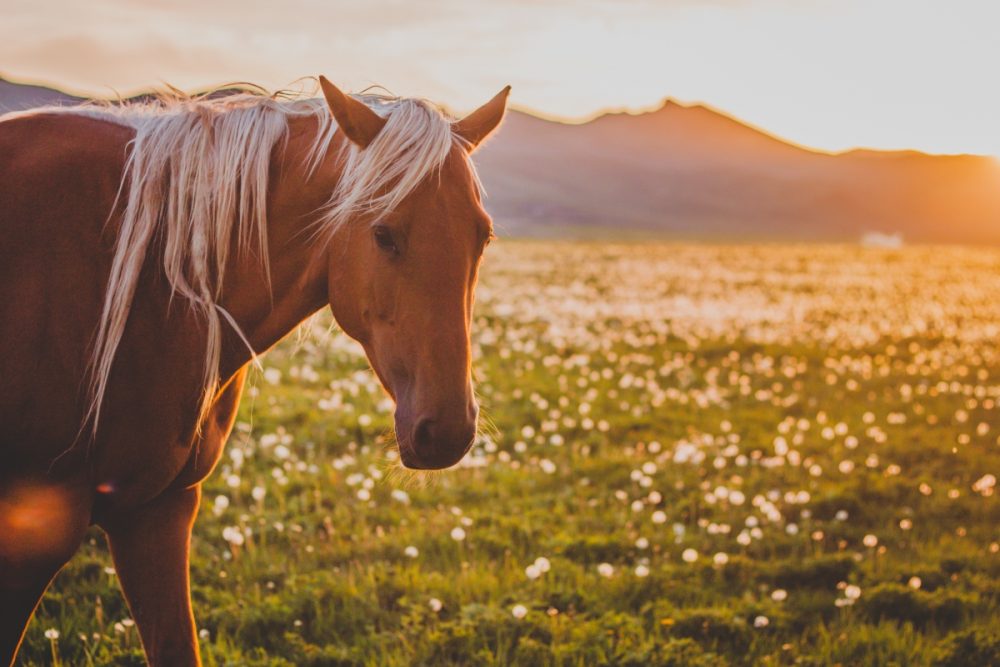
She still has a few such issues. I’ll ask her to run up a steep hill after some recalcitrant steers, and it is as if she’ll say: “but it is such a steep hill. Can’t we go around?”
Or if the brush is heavy, as it was this morning. Instead of diving in there as would most of our horses, she recoils in distaste of what I ask her to do; “but that may scratch me. Can’t we just leave those cattle in there?”
The sage was over 10 feet tall, and would easily sweep you off horseback if you were not paying attention. The cattle love it in there, because the understory is thick with verdant grass, and abundant shade. But most of the herd was still on the move, and we had to get them out. It took almost an hour, but we got it done, and all cattle were accounted for.
Later, as we took our afternoon break in cow camp and recalled the heavy and unyielding brush, Rebecca reflected on her bout with the big sage: “I was sure glad I had my chinks for that. My pants would have been shredded without them.”
It was perfect timing, because she had just put her chinks on that morning, freshly handcrafted by Ethan in his leather shop. They are like chaps, the long leg coverings for life on horseback on the range. Nearly all of the crew wears them. They save jeans, but also save body heat, especially on rainy days. With a canvas oilcloth slicker and chinks, you are weather impervious, despite being out in the wind, rain and snow for days at a time.
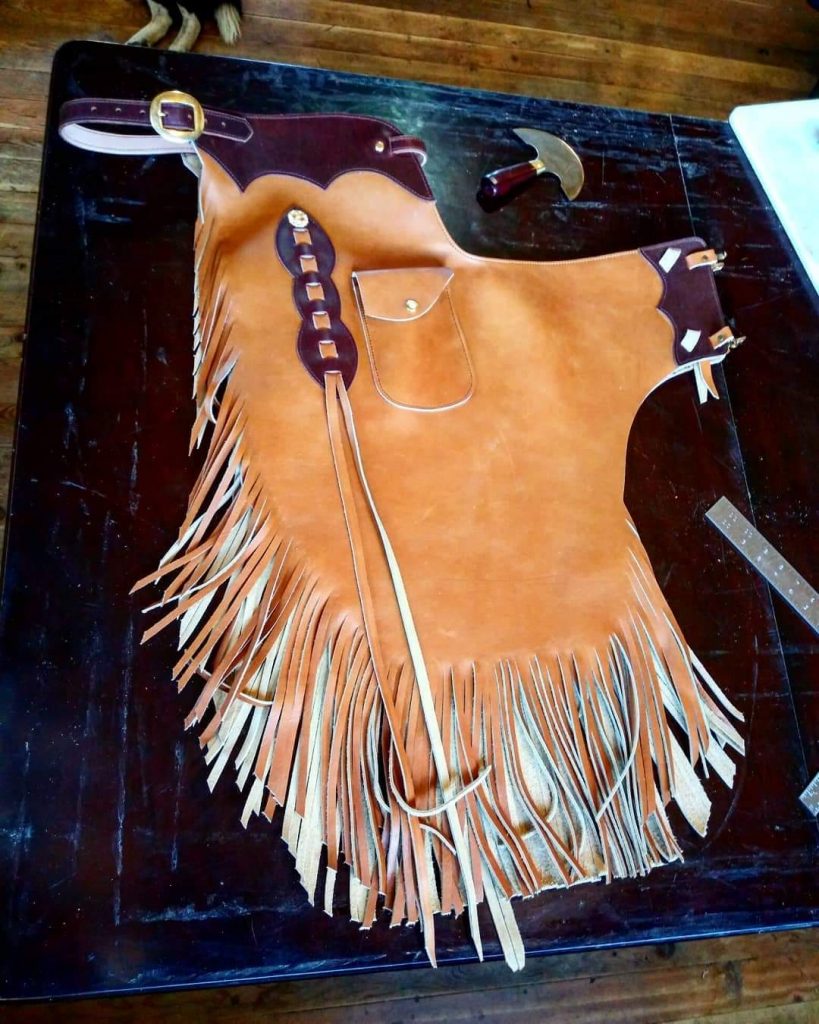
As I watched the crew gain in experience, I was happy to see that they were really getting the stockmanship part; instead of simply pushing cows or driving them, they were starting to herd by feel—by the subtle art of reading the language of cow and applying light pressure specifically where needed to ask the cattle to do what you wanted them to do. Nearly every other cow in this industrial agriculture and cattle-as-commodity world does not have that privilege. Bigger, better and faster has no allowance for cow as a partner.
And the cattle respond to our method of handling. Their flight zones decrease, now, by the day, and we approach them within tens of feet instead of by hundreds. We live and work with them each day, and they know us, and we them.
Later that day popping the big brush, we bring the herd down, back to water and camp at the onset of dusk. A plume of volcanic dust wisps into the air over the herd who are nimbly picking their way over canyon, rock and ridge for their familiar night ground and the bubble of spring water in the tanks. A low sun, balancing on the ridges of the peaks bathes the entire scene in a rosaceous alpenglow light. I pull up my mare for a moment as a take it all in.
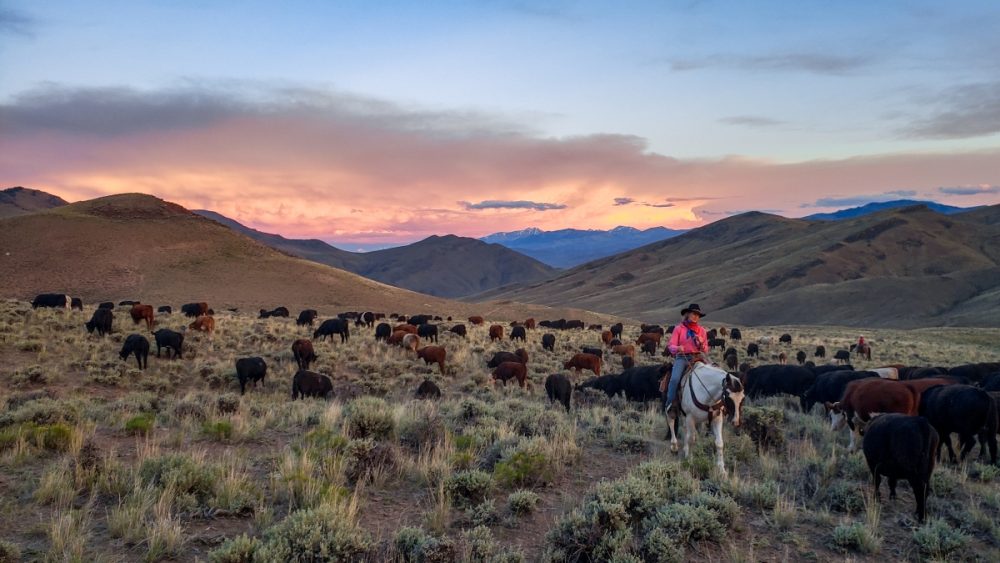
The air is filled with soft and peaceful sounds. The nighthawks are out, and their peenting and throaty mating vibe echoes through the night air. On the next ridge, voice rising and falling with the cadence of the nighttime breezes, Cowboy Sam is singing an African American spiritual in quiet baritone with perfect pitch as he works the drag, or rear of the herd, keeping them directed for camp. Rebecca gives an occasional yip from her voice as she moves them quietly along on the left flank below me. Colton just talks to them with a reassuring “Come on, cows“ as he works the right front.
Not a sound comes from the beeves themselves. They are the picture of contentment as the walk with never an utterance, for a contented cow has no words, but one.
And that is the sound of them happily tearing another bite of summer sunshine from the earth. And when they can all do that to their satisfaction, all is right with the world.
Happy Trails
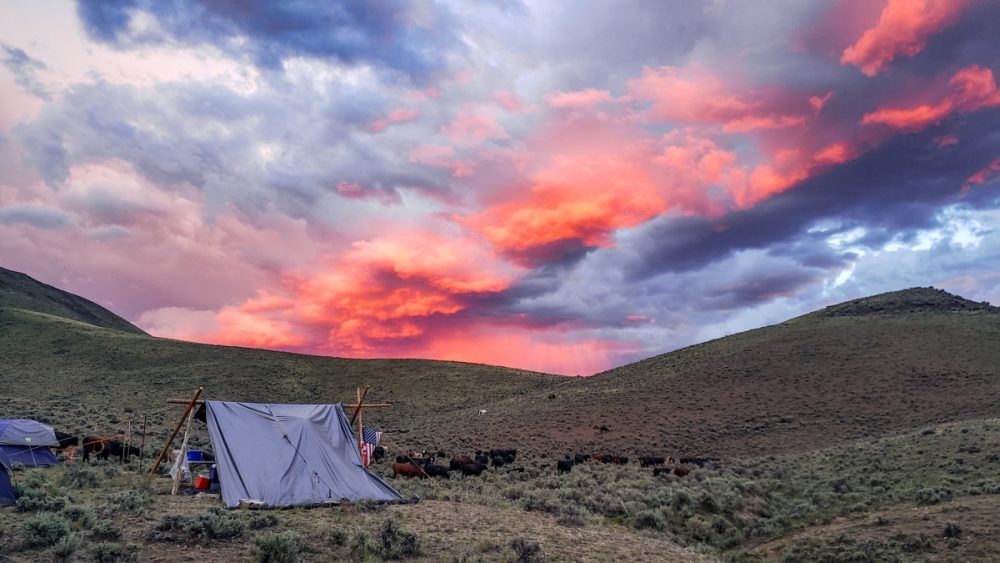

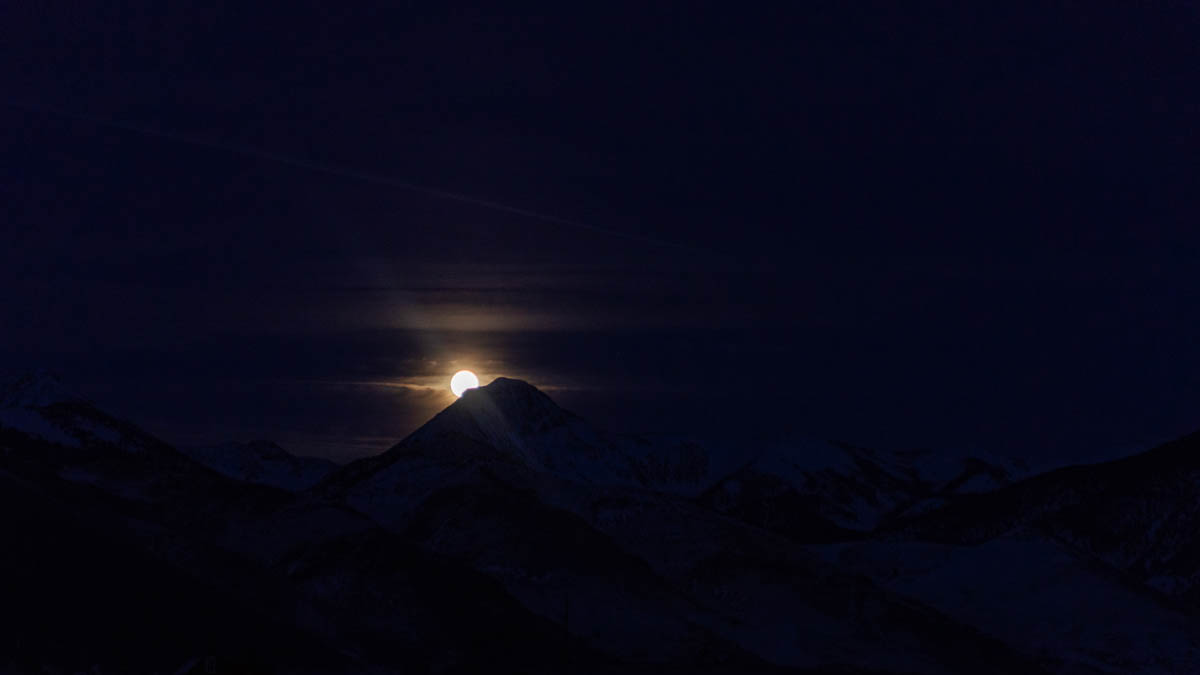


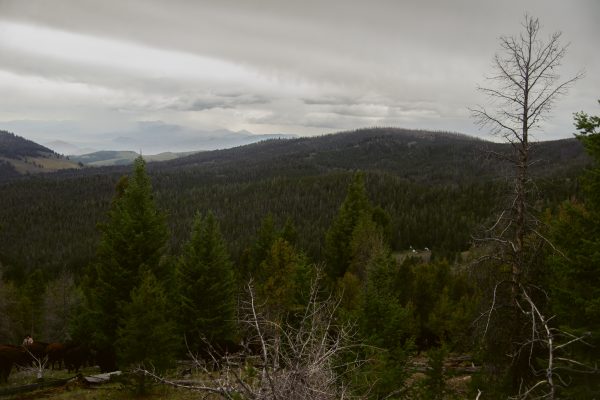
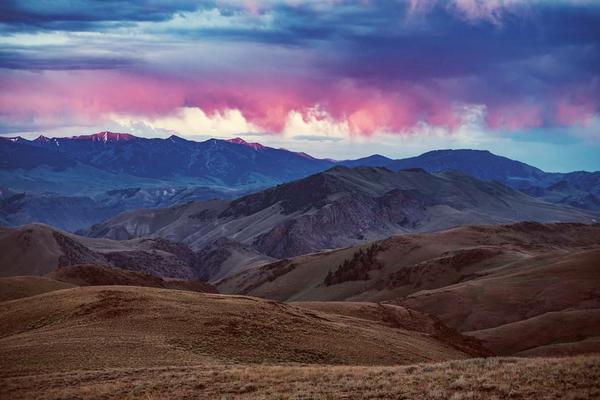

Sharon W De Los Reyes
Order Number: 27298
I placed this order on June 26 not realizing the ship date was June 25! Is this order still good for the July 8 ship date? I hope so!
I like Ruby! I have a Peruvian Paso with the same TUDE!!!
Caryl Elzinga
Hi Sharon
No worries on the order! Yes, it will ship on July 8. With 4th of July in the middle of the week, we were concerned that orders would get delayed and thawed, so we’ll be skipping Monday the 1st, and shipping again on the 8th. Let us know if that doesn’t work for you by emailing help@alderspring.com and Kelsey will take care of you. Thanks!!
Caryl Elzinga
Oh, and about those pretty horses and their ‘tudes! We can’t figure out if they are wired that way, or if we subliminally communicate that we think they are pretty and it goes to their heads!!
Helen Provine
What a beautiful life you have!! God bless you all!!!
Caryl Elzinga
Thank you, Helen. We are blessed!